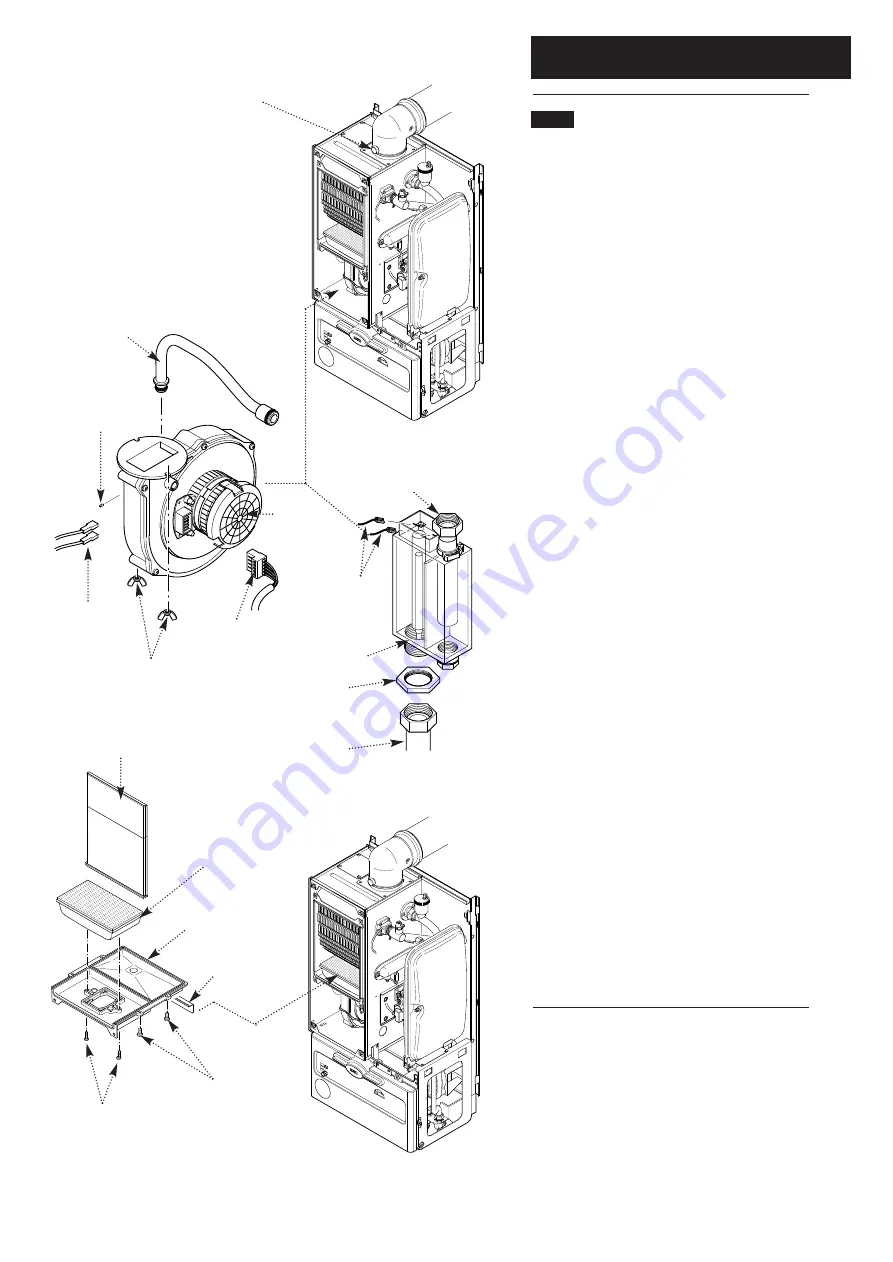
12.0
Servicing
32
12.1
Annual Servicing
(Cont)
12. To clean the heat exchanger and burner proceed as
follows:
a) Disconnect the electrical leads to the fan component
protection sensor (Fig. 42).
b) Loosen the screw retaining the gas injector pipe at the
venturi (Fig. 42).
c) Undo the two wing nuts to disconnect the fan (Fig. 42).
d) Remove the fan and disconnect the electrical supply to it
(Fig. 42).
e) Remove the gas injector pipe from the gas valve (push-fit)
(Fig. 42).
f) Undo the condensate trap securing nut, lock nut and the
condensate drain pipe. Remove the condensate trap and
disconnect the sensor leads (Fig. 43).
g) Remove the two screws securing the burner and remove
the burner. Visually inspect the internal burner baffle for
obstruction. Clean and if necessary replace the burner
(Fig. 44).
h) Loosen the two screws retaining the heat exchanger
support bracket and slide to the left to remove (Fig. 44).
i) Remove the four screws securing the heat
exchanger/combustion box base and withdraw the base.
j) Lower the central insulation panel and check condition
(Fig. 44). Replace the lower insulation pad if necessary.
k) Ensure the heat exchanger fins are clear of any
obstruction.
l) Check condition of all seals.
Important: Pay particular
attention to the condition of the combustion box door
seals.
m) Reassemble in reverse order.
13. Complete the relevant Service Interval Record section of
the Benchmark Commissioning Checklist at the rear of this
publication and then hand it back to the user.
Combustion Box Base
Securing Screws
Burner Securing
Screws
Combustion
Box Base
Burner
Wing Nuts
Electrical Supply
Lock Nut
Condensate
Trap
Condensate
Drain Pipe
Securing Nut
Central Insulation Panel
Heat Exchanger
Support Bracket
Injector Pipe
Injector Pipe Retaining
Screw
Protection
Sensor Leads
Fan
Fig. 42
Fig. 44
Fig. 43
Sensor
Leads
Flue Sampling Point
Summary of Contents for System 100 HE Plus
Page 49: ...16 0 Notes 49 ...
















































